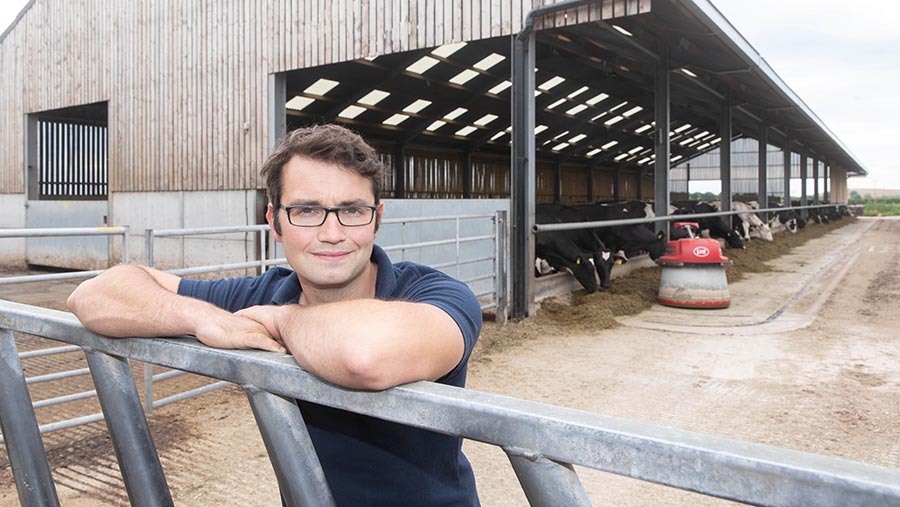Farmer Focus: Dairying – same game with new numbers
 Tom Stable © Tim Scrivener
Tom Stable © Tim Scrivener Last month’s piece was written in the middle of taking first-cut silage, and I was full of optimism that it would come in dry. That optimism was ill-placed.
The small weather window meant the first 20ha (50 acres) was too fresh, really, and the sheer volume of grass slowed us down enough to mean some got rained on after it was rowed up.
The analysis is damp – as you’d imagine – at 24% dry matter. But 12.1MJ/kg metabolisable energy and 18% crude protein were better than I expected.
See also: Retailers announce milk price top-ups for July
My neighbours have, one by one, taken it in turns to pick a weather window, mow their grass, and then have it rained on, which makes me feel a little better.
However, there is one exception (Messrs Satterthwaite) who judged it perfectly.
The milk price rises have come thick and fast for almost everyone, as have the increases in cost of production.
It’s like playing the same game, but with a whole new set of numbers. The rises in diesel and electricity alone have increased our costs by £5,500/month.
That said, I think things currently look good. Our arable enterprise is helping to reduce the effect of feed price rises, although costs in this sector have also increased significantly.
Next year’s fertiliser plan will involve particularly difficult decisions.
The latest milk price announcement came with the message: “This price rise will allow our farmers to make longer-term operating decisions.” I’m not quite so sure.
We have been fortunate that the milk price has increased at a similar pace to our input costs.
But you only need to look at the egg and pig sectors to find what would have happened if prices did not keep pace with costs.
I came home to farm in 2010 and the years that followed were very difficult, with the milk price dropping to a low of 17p/litre at one point.
It focused the mind, and every decision was taken to survive and save money. Things are different now and opportunities with grants and schemes seem aplenty.
But I’m not sure the rollercoaster of prices gives me the confidence to make long-term investments. Time will tell if this the new normal, or a perfect storm.

